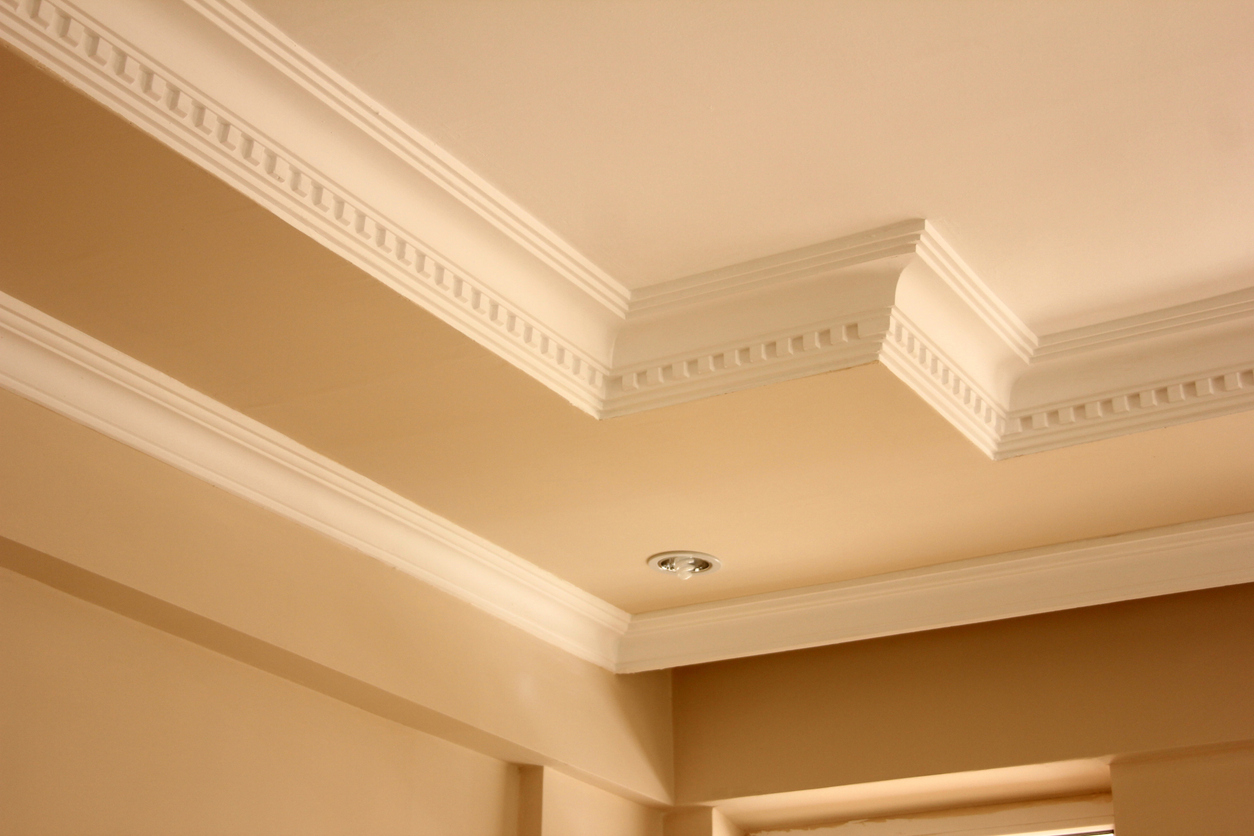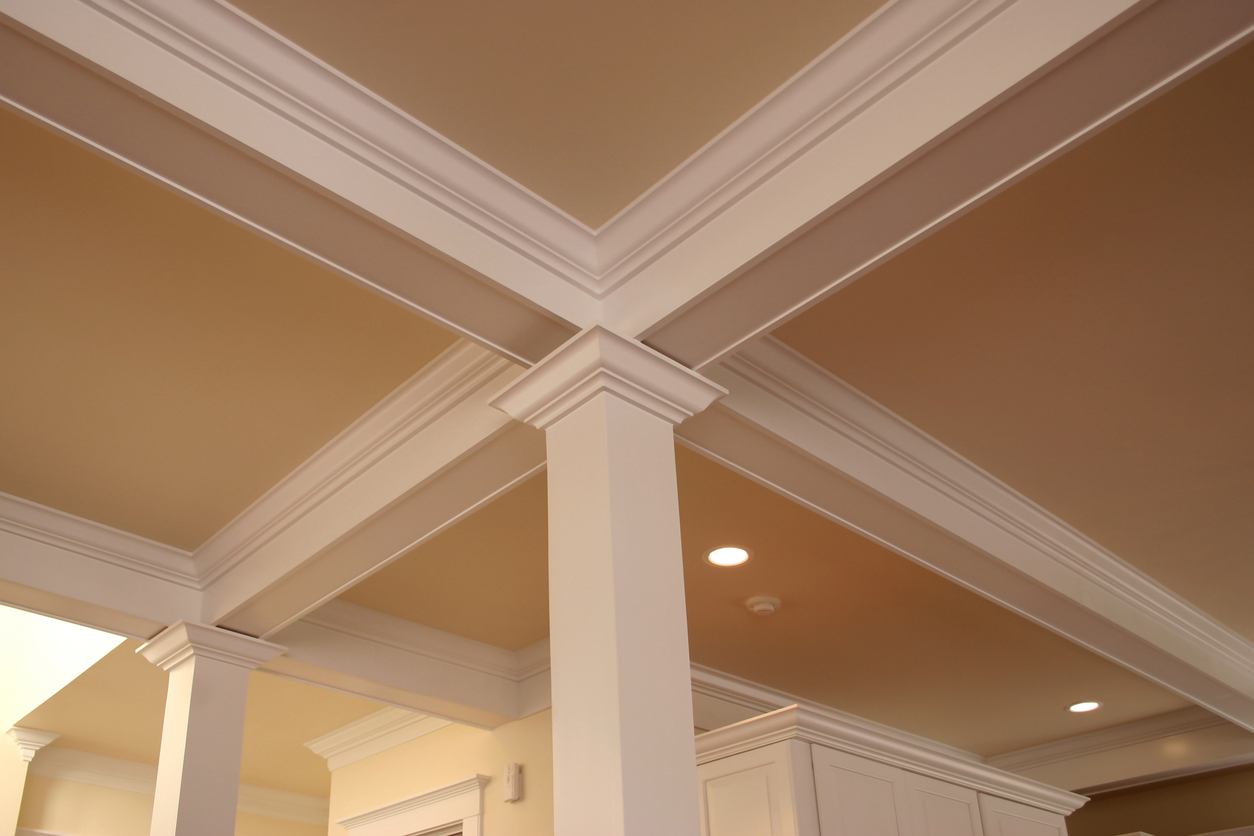Crown molding and trim, aside from finishing touches, can also transform ordinary rooms into splendid, visually appealing spaces. They add a layer of sophistication and a personal touch to any home, elevating both its aesthetic and market value. Whether you’re looking to enhance a classic design or inject a modern flair into your living space, this article will guide you through the myriad of styles, materials, for custom crown molding and trim installation for Concord area homes.
Learn how to choose the right designs that resonate with your home’s existing decor and discover how these elegant architectural elements can make your interior spaces stand out. Join us as we explore the art of beautifying homes with custom crown molding and trim—an investment in style that pays dividends in charm and elegance.
The Basics of Crown Molding and Trim
Crown molding and trim are essential elements in interior design, serving both functional and decorative purposes. Crown molding is a type of trim that is typically used to decorate the area where the wall meets the ceiling. It is often used to add a touch of elegance and to create a visual transition between these surfaces. Trim, on the other hand, refers more broadly to any finishing applied to the baseboards, door frames, and window casings. It serves to cover seams and transitions between surfaces, enhancing the overall aesthetic and finishing of a room.
Types and Materials
Crown molding and trim come in various styles and materials, each offering its unique aesthetic:
- Classical: This style often features intricate designs like leaves, dentil, or egg-and-dart patterns, reminiscent of Greek and Roman architecture.
- Modern: Modern trim tends to have cleaner lines and minimalistic designs, suitable for contemporary spaces.
- Ornate: Ornate styles are very detailed and elaborate, perfect for creating a luxurious and opulent atmosphere.
As for materials, choices vary widely, influenced by both budget and desired look:
- Wood: Traditional and warm, wood can be painted or stained and is ideal for a classic appearance.
- Plaster: Known for its smooth finish and high-end appeal, plaster is often used in historical restorations.
- MDF (Medium Density Fiberboard): A cost-effective and durable option, MDF is easy to paint and maintain.
- Polyurethane: Lightweight and resistant to warping or rotting, polyurethane is versatile and can mimic the look of more expensive materials.
Choosing the Right Style
Selecting the right crown molding and trim style involves considering the architectural elements and interior design theme of yourBenicia. CA home. For a house with Victorian elements, ornate crown moldings might be appropriate, while a modern Antioch, CA home might benefit from sleek, straightforward trim. It’s essential to ensure that the style of the molding complements rather than clashes with the home’s existing aesthetics.
Scale and Proportion
The scale and proportion of crown molding and trim are crucial for achieving balance within a room. Molding that is too large can overwhelm a space, while pieces that are too small may look insignificant and out of place. The ceiling height is a significant factor to consider; higher ceilings might require wider or more elaborate moldings to maintain visual proportion and coherence. Similarly, the size of the trim should correspond to the dimensions of the doors, windows, and baseboards to create a unified look.
Understanding these basics can guide Lafayette, CA homeowners in making informed decisions that enhance the elegance and character of their living spaces through the thoughtful addition of crown molding and trim.
Planning Your Project
Adding crown molding and trim to your Pleasant Hill, CA home can dramatically enhance its aesthetic appeal. To ensure the project goes smoothly and the results meet your expectations, careful planning is essential. Here’s how to get started:
Assessing the Spaces
- Visual Inspection: Walk through the rooms where you plan to install the molding or trim. Look for any architectural features that could influence the design, such as existing moldings, built-in elements, or unique ceiling styles.
- Consider the Lighting: Note how natural and artificial light plays in the space. Light can dramatically affect how the molding and trim appear, influencing choices in color and material.
- Room Function and Decor: Reflect on the room’s function and current decor. A more ornate design might suit formal areas like dining rooms, while simpler designs may be better for bedrooms or kitchens.
Measuring for Installation
- Perimeter for Crown Molding: Measure the perimeter of the room to determine how much molding you’ll need. For crown molding, focus on the length of the walls at ceiling height.
- Windows and Doors for Trim: Measure the height and width of all doors and windows for accurate trim sizing. Include measurements for any other areas that will require trim, such as baseboards or chair rails.
- Ceiling Height: Record the ceiling height to help choose the appropriate width of the crown molding. Higher ceilings might require larger, more prominent moldings to maintain visual balance.
Custom vs. Off-the-Shelf Molding and Trim
- Custom-Designed: Custom molding offers the advantage of a tailored look that perfectly fits your Walnut Creek, CA home’s specific dimensions and style. It allows for personalization and can accommodate any quirks in older homes, such as uneven walls or unique architectural features.
- Off-the-Shelf: These are more economical and readily available, making them a convenient option for standard applications. However, they offer less flexibility in terms of design and size adjustments.
Working with a Designer or Craftsman
- Choosing a Professional: Select someone with experience and a portfolio that aligns with your aesthetic preferences. Recommendations from friends or reviews can be invaluable in finding a trustworthy professional.
- Collaboration and Design: Share your ideas, preferences, and the inspiration you’ve gathered with the designer or craftsman. They can help refine your vision, ensuring the final product is both functional and stylistically congruent with your Vallejo, CA home.
- Material Selection: Discuss materials that fit your budget and design requirements. A good designer can recommend the best materials that provide durability and visual impact.
- Review Samples and Sketches: Before finalizing the project, review samples or sketches of the molding or trim. This step helps avoid misunderstandings and ensures the final product meets your expectations.
Installation Insights
Depending on your skills, tools, and the complexity of the project, installing crown molding and trim can be a rewarding DIY project or a task better left to professionals. Here’s a breakdown of the pros and cons, along with common challenges and tips for a successful installation.
DIY vs. Professional Installation
Pros of DIY Installation:
- Cost Savings: By handling the installation yourself, you can save on labor costs, which can be significant.
- Learning Opportunity: DIY projects can be enriching, giving you new skills and a deeper understanding of home construction and design.
- Satisfaction: A unique sense of accomplishment comes from completing home improvements on your own.
Cons of DIY Installation:
- Skill Level: Installing crown molding and trim requires precision. Mistakes can lead to wasted materials and a less-than-professional appearance.
- Tools: Specialized tools are often necessary, including a miter saw, coping saw, and nail gun, which might require additional investments.
- Time Consumption: Without professional experience, the project may take longer than expected, potentially disrupting home life.
Pros of Hiring Professionals:
- Expertise and Efficiency: Professionals bring experience, ensuring the installation is done correctly and quickly.
- Tools and Techniques: They have the right tools and know the tricks of the trade to handle complex corners and designs.
- Quality and Warranty: Professional work often comes with a guarantee, giving you peace of mind regarding the quality and durability of the installation.
Common Challenges and Tips for Overcoming Them
1. Inaccurate Measurements: One of the most frequent issues is cutting pieces that don’t fit due to inaccurate measurements.
Tip: Measure twice and cut once. Use precise tools and double-check your measurements before cutting.
2. Complex Angles: Corners that are not perfectly square can pose significant challenges, especially in older homes.
Tip: Use a coping saw for tighter fits and use flexible caulk to cover any gaps that appear due to imperfect angles.
3. Matching Patterns at Seams: Ensuring that decorative patterns line up at the seams can be difficult, particularly with intricate designs.
Tip: Plan the layout before making any cuts, and always cut pieces a bit longer than needed to allow for fine adjustments.
4. Securing to Walls: Different wall materials require different techniques and fasteners.
Tip: Identify the wall material (drywall, plaster, concrete, etc.) and use the appropriate anchors and fasteners. For drywall, locating studs to secure the molding can provide additional support.
5. Finishing Touches: Filling nail holes, caulking seams, and painting can be as important as the installation.
Tip: Use wood filler for holes and fine caulk for seams. Sand smooth before painting, and always apply a primer designed for your molding material before the final paint coat.
Whether you choose to DIY or hire a professional, understanding these aspects of crown molding and trim installation will help you better prepare for the project and set realistic expectations.
Finishing Touches
The final steps of painting and finishing crown molding and trim are crucial for achieving a polished look and ensuring the longevity of your installation. Here’s how to properly finish your crown molding and trim to enhance both durability and appearance.
Preparing the Surface
Before painting or staining, make sure your molding and trim surface is smooth and clean. Any imperfections, such as rough spots or nail holes, should be filled with wood filler and sanded down once dry. Dust off all surfaces thoroughly to remove sanding debris and ensure a clean surface, allowing finishes to adhere properly.
Choosing Paint or Stain
Paint:
- Type: Use high-quality acrylic latex paint for most trim work because it has a durable finish that resists chipping and is easy to clean. Consider a semi-gloss or high-gloss finish for bathrooms or kitchens, which can withstand moisture and frequent cleaning.
- Color: Select a color that complements the wall color and fits the room’s overall design scheme. White is a popular choice because it brightens the room and provides a clean, crisp look, but don’t be afraid to choose a color that contrasts with your walls for a more dramatic effect.
Stain:
- Type: Choose a stain that enhances the natural beauty of wood trim, particularly if you’re using high-quality wood. Stains are available in a variety of shades and transparencies, from light to dark, allowing the wood grain to show through.
- Application: Apply stain with a brush and wipe off excess with a rag to achieve the desired color intensity. Always test the stain on a small, inconspicuous area first to make sure it provides the look you want.
Sealing and Protecting
After painting or staining, apply a clear sealer or polyurethane coat to protect the surface. This step is especially important for stained trim to seal the color and prevent wear. A clear coat can enhance durability for painted trim, though it’s not always necessary if using high-quality paint. Use a satin or semi-gloss polyurethane to preserve the desired finish without adding unwanted glossiness.
Application Tips
- Brushes: Use high-quality brushes for both paint and stain. For painting, angled brushes can help achieve clean, sharp lines, particularly in corners and near ceilings. For staining, brushes designed for smooth and even application are best.
- Technique: Apply paint or stain in long, even strokes, following the grain of the wood when staining. Avoid over-application, which can lead to drips and uneven drying. Multiple light coats are often better than one heavy coat.
- Drying Time: Respect the drying times the paint or stain manufacturer recommends between coats. Rushing this process can result in a finish that is not durable or visually appealing.
By following these recommendations, you can enhance the durability and appearance of your crown molding and trim, ensuring that these elements contribute elegantly to your home’s overall aesthetic for years to come.
Maintenance and Care
Crown molding and trim can dramatically enhance the appearance of your home, but like any architectural detail, they require proper care and maintenance to keep them looking their best. Here’s how you can effectively maintain, repair, and restore your crown molding and trim.
Regular Cleaning and Maintenance
- Dust Regularly: Crown molding and trim tend to collect dust, especially in intricate designs and higher, harder-to-reach areas. Use a soft cloth or a duster to remove dust gently. A telescoping duster can be particularly useful for higher areas.
- Clean Gently: Periodically, doing more than just dust may be necessary. Use a mild soap and water solution to wipe down the molding and trim gently. Avoid harsh chemicals or abrasive cleaners, which can strip paint or finish. A microfiber cloth works well for painted surfaces to avoid scratching the finish.
- Check for Gaps: The wood may contract and expand over time, causing gaps at joints or between the molding and the wall or ceiling. These can be filled with the appropriate caulk to maintain a seamless appearance. Make sure to use a paintable caulk to touch up the paint afterward.
- Touch-Up Paint: If the paint on the molding or trim gets nicked or chipped, touch up those areas to prevent further damage and maintain a fresh look. Keep some leftover paint from the initial application for this purpose.
Repair and Restoration
- Minor Damage Repair: For small scratches or dents, use wood filler to fill the imperfection, then sand smoothly once dry. After sanding, touch up with paint or stain to match the surrounding area.
- Restoring Older Molding: Restoring older crown molding and trim can involve cleaning layers of dirt and removing old paint. Use a gentle approach to avoid damaging the wood details. Stripping old paint may require a chemical paint remover; choose a safe product for indoor use and follow the manufacturer’s instructions carefully.
- Reaffixing Loose Molding: If the molding sections have come loose, they may need to be reaffixed to the wall or ceiling. Use appropriate nails or screws, and ensure they are secured into the wall studs or ceiling joists. Cover any exposed nail heads with wood filler, sand smooth, and touch up with paint.
Preventative Measures
- Environmental Control: Keep indoor humidity levels consistent to prevent the wood from expanding and contracting, which can lead to cracks or gaps. Use dehumidifiers or humidifiers to maintain a stable environment in a humid or dry area.
- Regular Inspections: Occasionally check the molding and trim for any signs of damage or wear. Catching issues early can prevent more extensive repairs later.
By adhering to these maintenance, repair, and restoration tips, your crown molding and trim will continue to serve as beautiful and elegant aspects of your home’s interior, contributing to its overall aesthetic and charm for many years.
Conclusion
With the right installation, finishing touches, and regular maintenance, crown molding, and trim can significantly enhance the beauty and elegance of your home. These elements not only add character but also increase the value of your property. Don’t hesitate to contact Custom Painting, Inc. for expert advice or professional services related to painting and maintaining your crown molding and trim. You can reach us at 925-686-0903 or through our online contact form for a consultation or service request.




